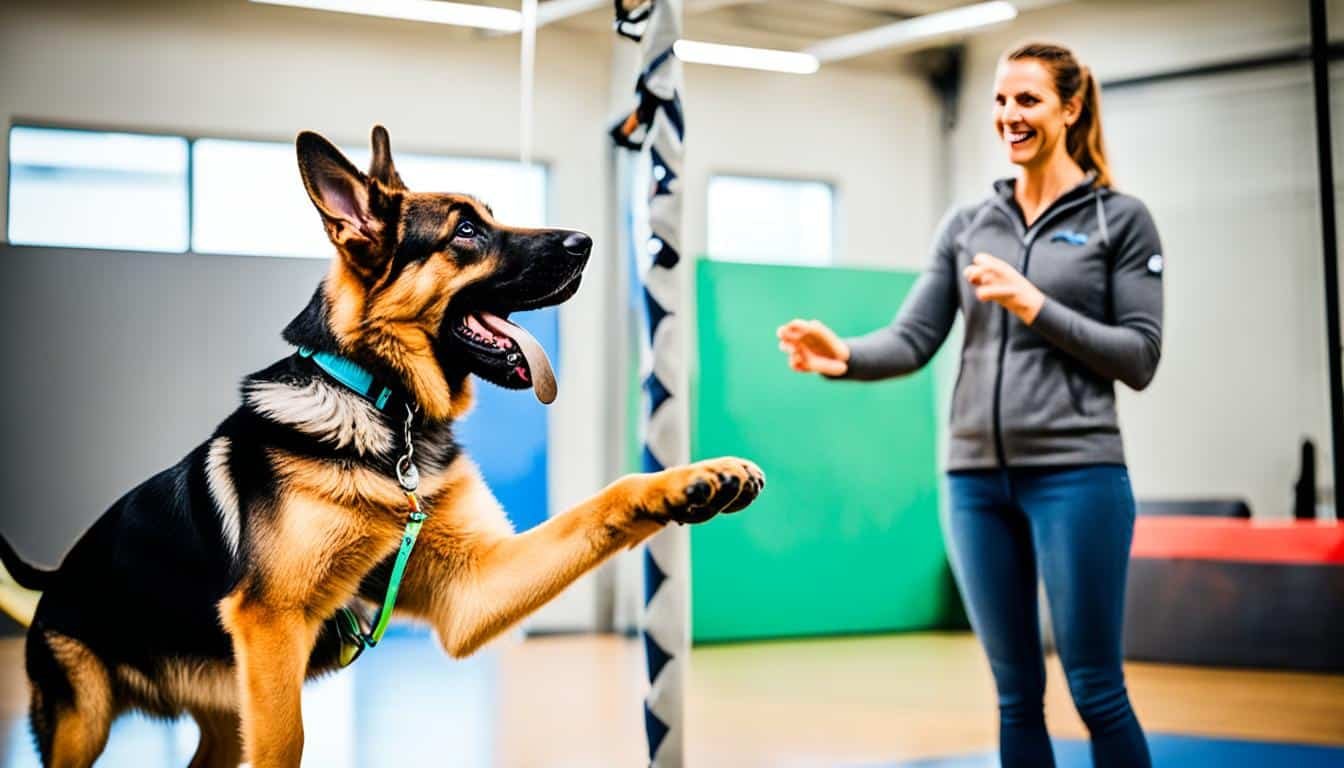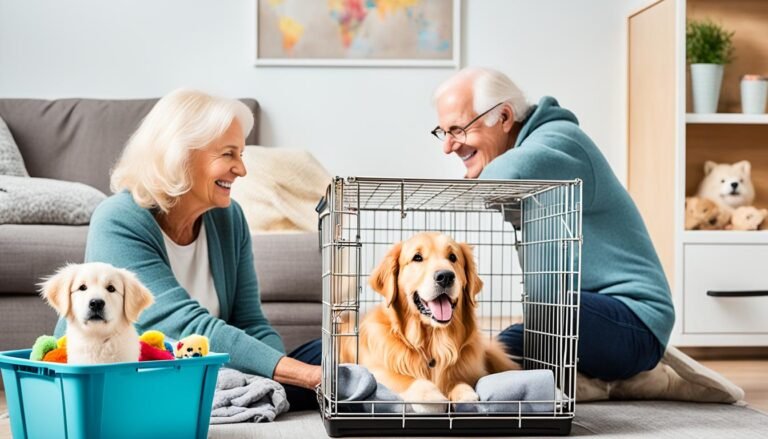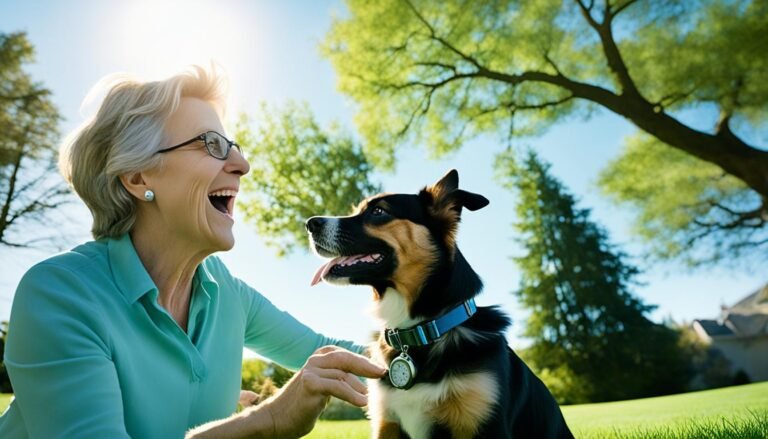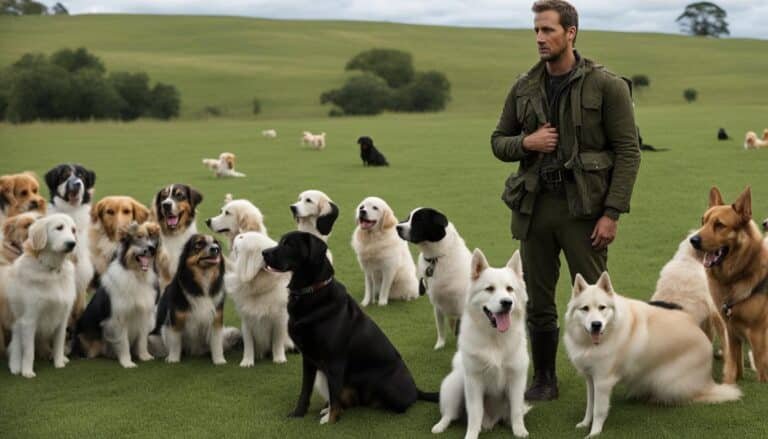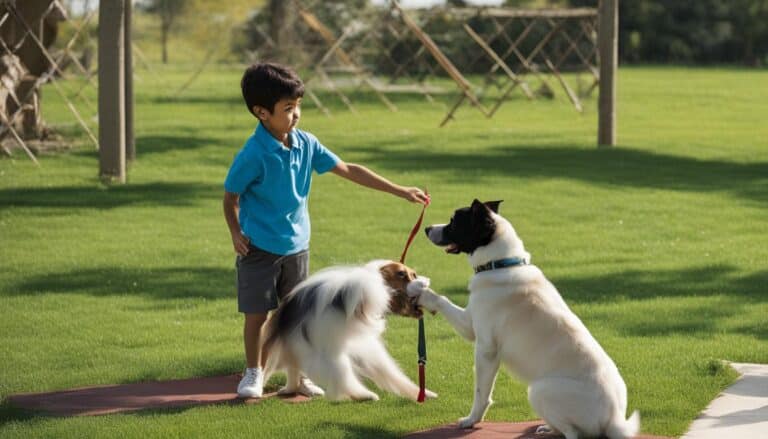How to Train Dog Obedience
Picture this: you’re taking a leisurely stroll in the park with your newly adopted pup, Bella. The sun is shining, birds are chirping, and everything seems perfect. Suddenly, Bella spots a squirrel. Her excitement takes over, and before you know it, she’s pulling you with all her might, eager to chase after her newfound furry friend.
Sound familiar? Many dog owners have experienced similar situations, where their dogs’ lack of obedience can lead to frustration and even safety concerns. But fear not! With the right techniques and training, you can transform Bella’s behavior and create a strong bond between you and your furry companion.
In this article, we’ll explore effective dog obedience training techniques that can help you teach Bella how to listen, follow commands, and become a well-behaved member of your family. Whether you’re a new dog owner or have been struggling with obedience issues for some time, these best methods for teaching obedience to dogs will provide you with the knowledge and tools you need to succeed.
But before we dive into the specifics, let’s take a moment to understand why training Bella in obedience is so important and what benefits it can bring to both you and your beloved pet.
The Benefits of Dog Obedience Training
Training your dog in basic obedience commands offers a multitude of benefits that go beyond just having a well-behaved pet. It sets the foundation for a harmonious relationship and opens up exciting opportunities for both you and your furry companion.
1. Building a Strong Relationship
Obedience training is an excellent way to bond with your dog and strengthen your relationship. Through training sessions, you and your dog establish clear communication and trust. As you work together towards common goals, you build a deep understanding and connection. This shared experience fosters a sense of companionship and enhances the overall quality of your relationship.
2. Ensuring Safety and Control
When your dog understands and obeys basic commands such as sit, stay, and come, it enhances their safety and provides you with greater control. These commands enable you to prevent your dog from darting into potential hazards or running off in unsafe situations. By teaching your dog how to respond to these commands reliably, you’ll have peace of mind knowing that you can keep them protected and out of harm’s way.
3. Preventing Boredom
Dogs thrive on mental stimulation and physical activity. Obedience training offers both. Engaging your dog in training exercises challenges their minds and prevents boredom. When dogs have structured training sessions, they are less likely to engage in destructive behaviors caused by boredom, such as excessive barking or chewing on furniture. Training provides a stimulating outlet for their energy and keeps their minds engaged and fulfilled.
Additionally, obedience training allows your dog to participate in various activities that require good behavior, such as off-leash running, hiking, and interacting with other dogs. These experiences further enrich their lives and prevent them from becoming restless or frustrated due to a lack of physical and mental stimulation.
4. Enhanced Communication
Obedience training establishes a common language between you and your dog. By teaching them commands and cues, you’ll be able to convey your expectations and desires effectively. This clear communication helps in daily interactions and allows your dog to understand what you want from them. As a result, you’ll experience less frustration and have a better understanding of your dog’s needs and desires.
5. A Happier, Well-Adjusted Dog
Dogs thrive on routine and structure. Obedience training provides them with a sense of purpose and belonging. As your dog learns and successfully performs commands, they gain confidence and a sense of accomplishment. This, in turn, contributes to their overall happiness and well-being. A well-trained dog is more likely to exhibit good manners, be comfortable in different environments, and navigate social interactions with ease.
Investing time and effort into dog obedience training yields long-lasting rewards for both you and your furry friend. Not only does it result in a well-behaved and obedient dog, but it also enhances your bond, keeps your dog mentally and physically stimulated, and ensures their safety and happiness.
How Dogs Learn
Dogs are intelligent creatures that enjoy learning new things. When it comes to training your furry friend, a reward-based approach is the most effective method. By associating desirable behaviors with something they love, such as treats, toys, or praise, you can motivate your dog to repeat these behaviors.
Understanding what motivates your dog is crucial in the training process. Every dog has their own preferences, so it’s important to identify their favorite treats or toys. By using these as rewards, you can make the training sessions enjoyable and increase their effectiveness.
During training, be sure to provide immediate reinforcement when your dog displays the desired behavior. This helps to reinforce the connection between the action and the reward. Over time, your dog will learn to associate the behavior with the positive outcome and will be more likely to repeat it.
It’s important to note that patience is key when training your dog. Every dog learns at their own pace, so it’s important to be consistent and persistent in your training efforts. Celebrate small victories along the way and never get discouraged if progress is slower than expected.
Remember, the goal of training is to create a strong bond and a positive relationship between you and your dog. By using reward-based techniques and incorporating their favorite treats or toys, you can make the training process enjoyable for both of you.
Learning how dogs learn and tailoring your approach to their individual preferences will set you up for success in training your furry companion.

Top Training Tips
When it comes to training your dog, there are some essential tips and techniques that can make the process more successful and enjoyable for both you and your furry friend. By following these dog training tips, you can effectively teach your dog new commands and behaviors while strengthening your bond.
Minimize Distractions
One of the key factors in successful dog training is minimizing distractions. Start your training sessions in a quiet and distraction-free environment, such as a calm room in your house or a fenced-in backyard. This will help your dog focus on the training exercises and avoid getting overwhelmed or distracted.
Keep Sessions Short and Regular
Training sessions should be short, typically lasting around 10 to 15 minutes. Dogs have shorter attention spans, so it’s important to keep the sessions focused and engaging. Instead of having one long training session, break it up into multiple short sessions throughout the day. Consistency is key, so aim to train your dog at least once or twice a day to reinforce their learning.
Patience is Key
Every dog learns at their own pace, so patience is crucial during the training process. Some dogs may pick up commands quickly, while others may require more time and repetition. Stay calm and patient, and avoid getting frustrated or losing your temper. Positive reinforcement and consistency will help your dog understand what you expect from them.
End on a Positive Note
Always end each training session on a positive note. Finish with a command or behavior that your dog knows well and that they can easily accomplish. This helps to reinforce their confidence in their training and leaves them feeling successful. Remember, training should be a positive experience for both you and your dog.
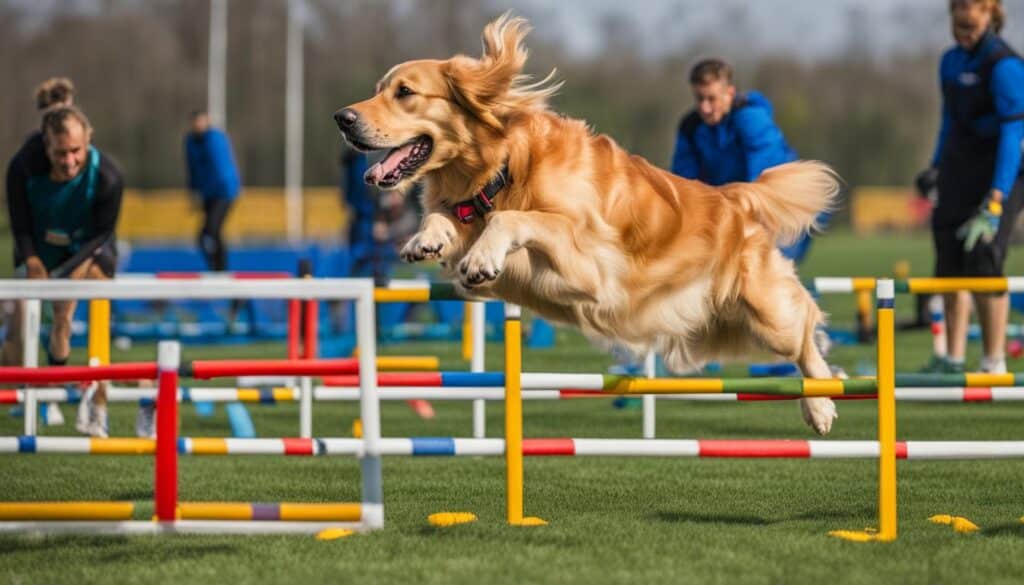
Make Training Fun
Training should be a fun and enjoyable experience for both you and your dog. Incorporate games, toys, and treats into your training sessions to keep things exciting and engaging. Use positive reinforcement, such as praise and rewards, to motivate your dog and make them eager to participate in the training exercises. When training is enjoyable, your dog will be more willing to learn and cooperate.
By implementing these top training tips, you can create a positive and effective training experience for your dog. Remember to minimize distractions, keep sessions short and regular, be patient, end on a positive note, and make training fun. With consistency and dedication, you can help your dog become well-behaved and obedient while building a strong bond together.
Getting to Grips with the Basics
While our guides can provide you with the basics of dog training, enrolling in dog training classes can be highly beneficial. These classes offer a structured and interactive environment that can help you and your furry friend learn and grow together.
Dog training classes provide a great foundation for both you and your dog. In these classes, you’ll learn about the basics of dog training, including commands such as sit, stay, and come. You’ll also gain insights into advanced training methods, such as clicker training, which can further enhance your dog’s learning experience.
Attending dog training classes offers several advantages. Firstly, it provides a controlled setting where you and your dog can practice training techniques under the guidance of professional trainers. Additionally, these classes allow your dog to interact with other dogs, helping them develop essential socialization skills.
If you encounter any difficulties during training, seeking advice from a qualified behaviorist is a wise step. Behaviorists specialize in addressing behavioral issues such as excessive barking, aggression, destructiveness, and phobias. Their expertise can provide valuable guidance and support throughout the training process.
Remember, seeking professional help in dog training is not a sign of weakness but a proactive approach to ensure the success of your training journey. Professional dog training instructors can provide extra assistance and personalized attention, tailoring their methods to suit your dog’s unique needs.
House Training and Other Essential Commands
When bringing a new dog into your home, one of the first things you’ll want to tackle is house training. Also known as housebreaking or potty training, this process is essential for teaching dogs where to go potty and ensuring a clean and hygienic living environment.
A key aspect of house training is crate training. Crate training involves providing your dog with a designated space, usually a crate or a confined area, where they can rest and feel secure. Dogs have an instinctual desire to keep their sleeping areas clean, so utilizing a crate can help in the house training process by encouraging them to hold their bladder and bowels until they are taken outside.
Another important aspect of training is leash training. A properly trained dog that can walk calmly on a leash is not only safer for themselves but also for others in the community. Leash training helps to prevent pulling, lunging, and other undesirable behaviors during walks, allowing you to have more control and ensuring a pleasant and safe experience for everyone involved.
Socialization is also crucial for dogs to learn how to interact appropriately with people, animals, and different environments. Exposing your dog to various social situations from an early age can prevent behavioral issues and promote a friendly and well-adjusted temperament. Socialization should involve positive experiences and gradual exposure to new stimuli, such as different sounds, sights, and smells.
Clicker training is a popular method that uses positive reinforcement to teach a variety of commands and tricks. By associating the sound of a clicker with a reward, such as a treat or praise, you can communicate desired behaviors effectively to your dog. Clicker training is effective for teaching basic obedience commands such as sit, stay, come, as well as more advanced tricks.
In summary, house training, crate training, leash training, socialization, and clicker training are all important components of a comprehensive dog training program. By implementing these techniques, you can ensure that your dog develops good habits, stays safe, and becomes a well-behaved and happy companion.
Addressing Behavior Problems and Advanced Training
Dogs are wonderful companions, but they may still encounter behavior problems even after learning the basics of obedience. It’s crucial to address and correct these issues through proper training and consistent reinforcement to ensure a harmonious relationship with your furry friend.
One common challenge dog owners face is proofing behaviors. This means teaching your dog to be obedient in various situations and locations. By practicing commands in different environments, you can help your dog understand that the rules apply regardless of the circumstances. It’s important to gradually introduce distractions and reinforce the desired behavior with treats or praise.
Another aspect of advanced training is teaching your dog tricks. Not only does this provide mental stimulation, but it also strengthens the bond between you and your four-legged companion. From simple tricks like “roll over” or “shake hands” to more complex tricks like “play dead” or “fetch a specific toy,” teaching your dog tricks can be a fun and rewarding experience for both of you.
If you’re looking for even more challenges, consider getting involved in dog sports or activities. These can range from agility courses and flyball to scent detection or even canine freestyle dancing. Engaging in these activities not only provides physical exercise but also stimulates your dog’s mind and builds their confidence.
Remember, training is an ongoing process. Even if your dog has mastered the basics, consistent reinforcement and ongoing training are important to maintain their skills and strengthen the bond between you. Keep training sessions fun, rewarding, and enjoyable for both you and your canine companion.
The Importance of Consistency and Rewards
Consistency is crucial in dog training. By using the same commands consistently, you help your dog understand what is expected of them. This clear communication is essential for their learning process. Whether you’re teaching them to sit, stay, or any other command, make sure to use the same words and gestures each time.
Along with consistency, rewards play a vital role in training your dog effectively. When your dog exhibits the desired behavior, be sure to reward them promptly. This can be done using treats, toys, or verbal praise. Rewards serve as positive reinforcement, encouraging your furry friend to repeat the desired behavior in the future.
On the other hand, it’s essential to address undesirable behavior by withholding rewards. For instance, if your dog jumps up when greeting people, ignore them until they keep all four paws on the ground. Once they comply, reward them with praise or a treat. This helps your dog understand that certain behaviors don’t lead to positive outcomes.
During training sessions, keep in mind that dogs have varying attention spans. To make the most of your training time, keep sessions short and focused to maintain their engagement. Remember, every dog is unique, so finding the rewards that motivate them the most is key. Experiment with different treats or toys to discover what captures their attention and drives their enthusiasm.
